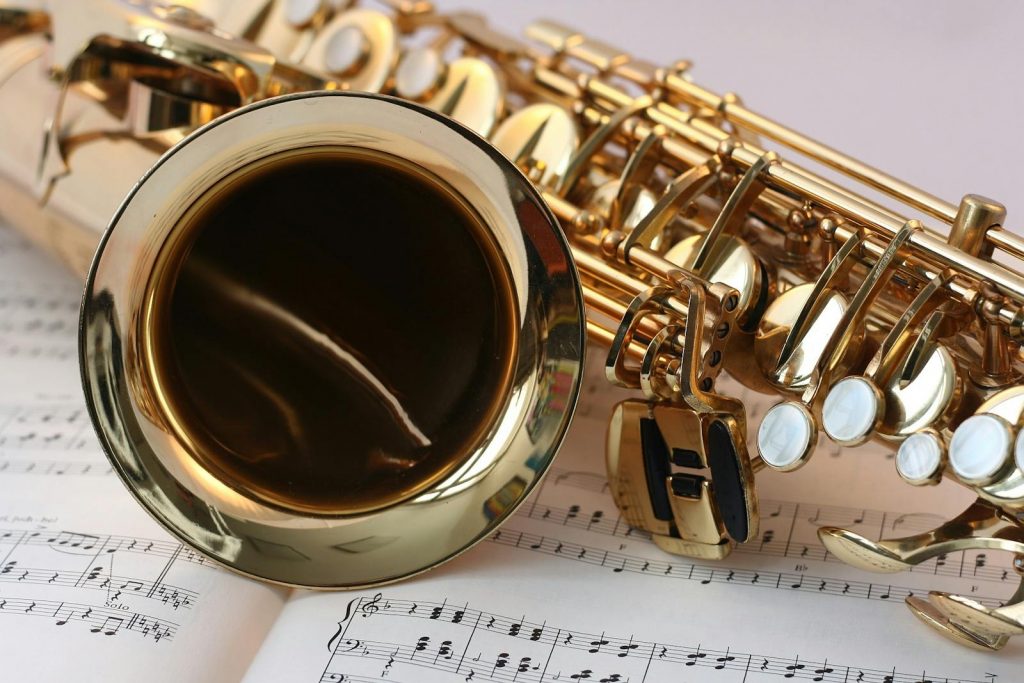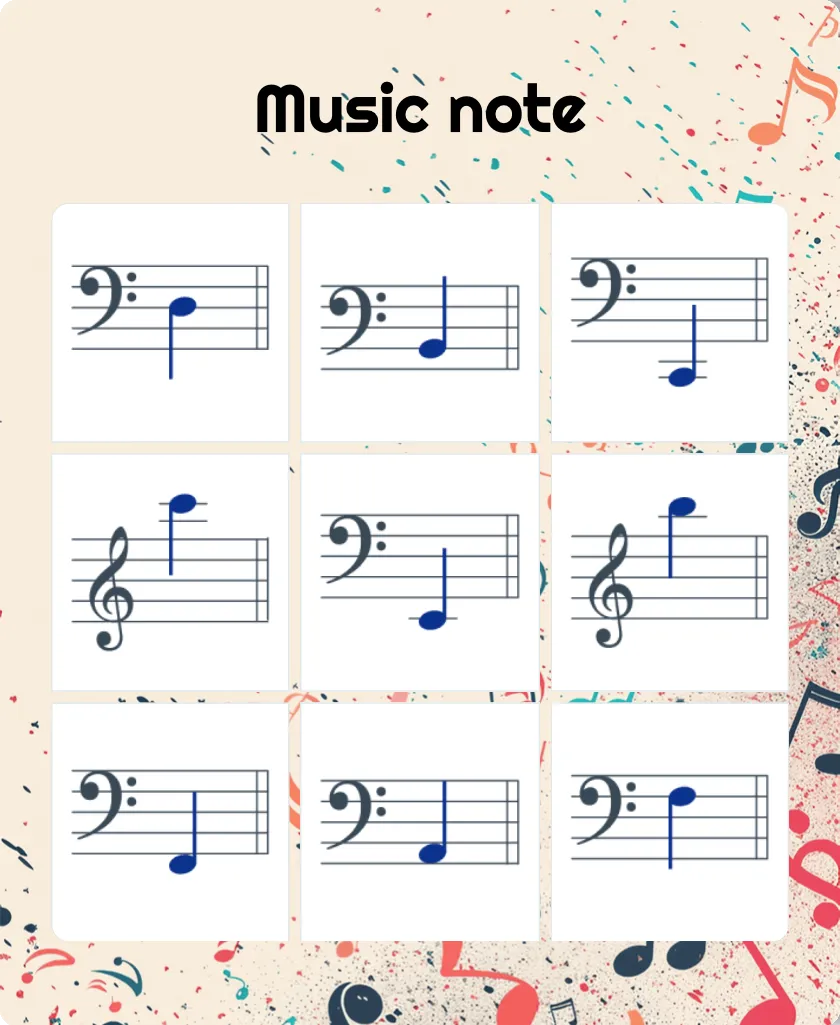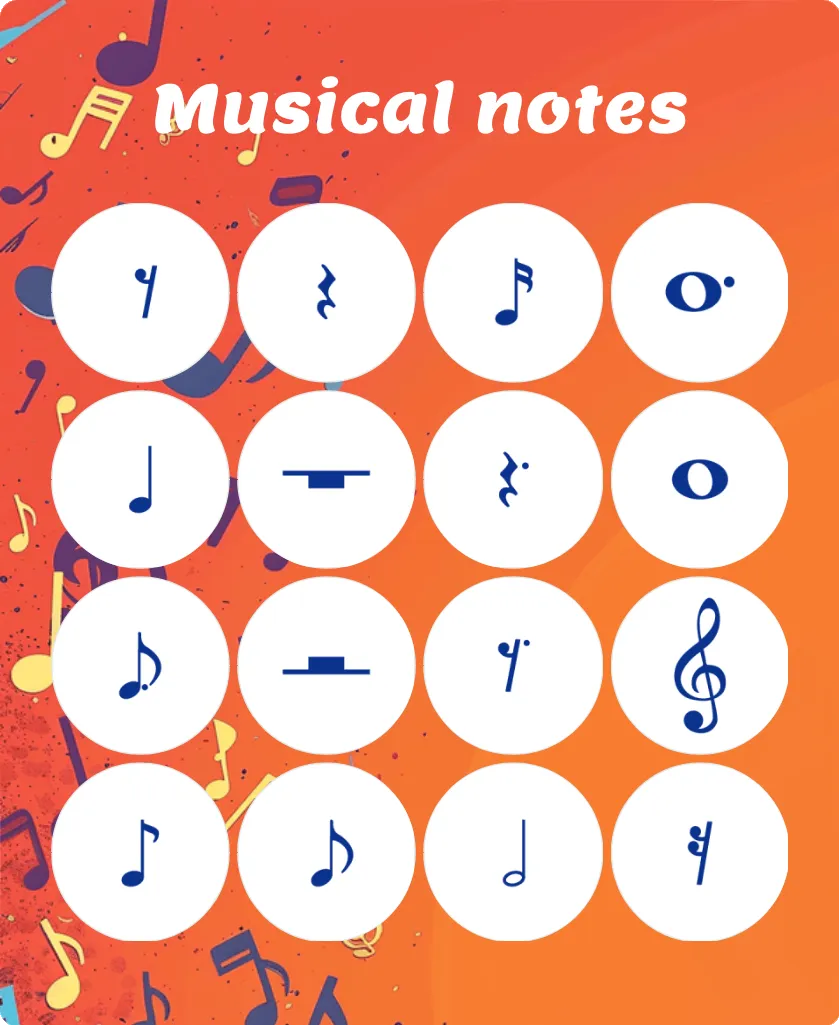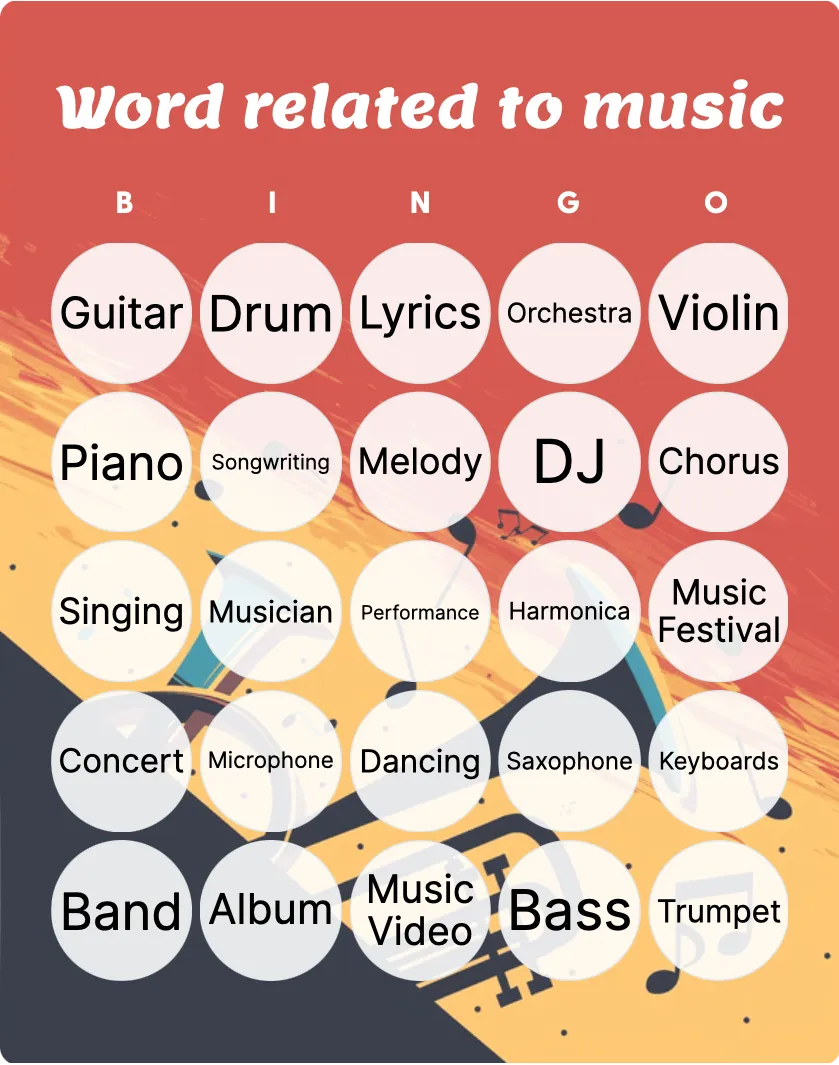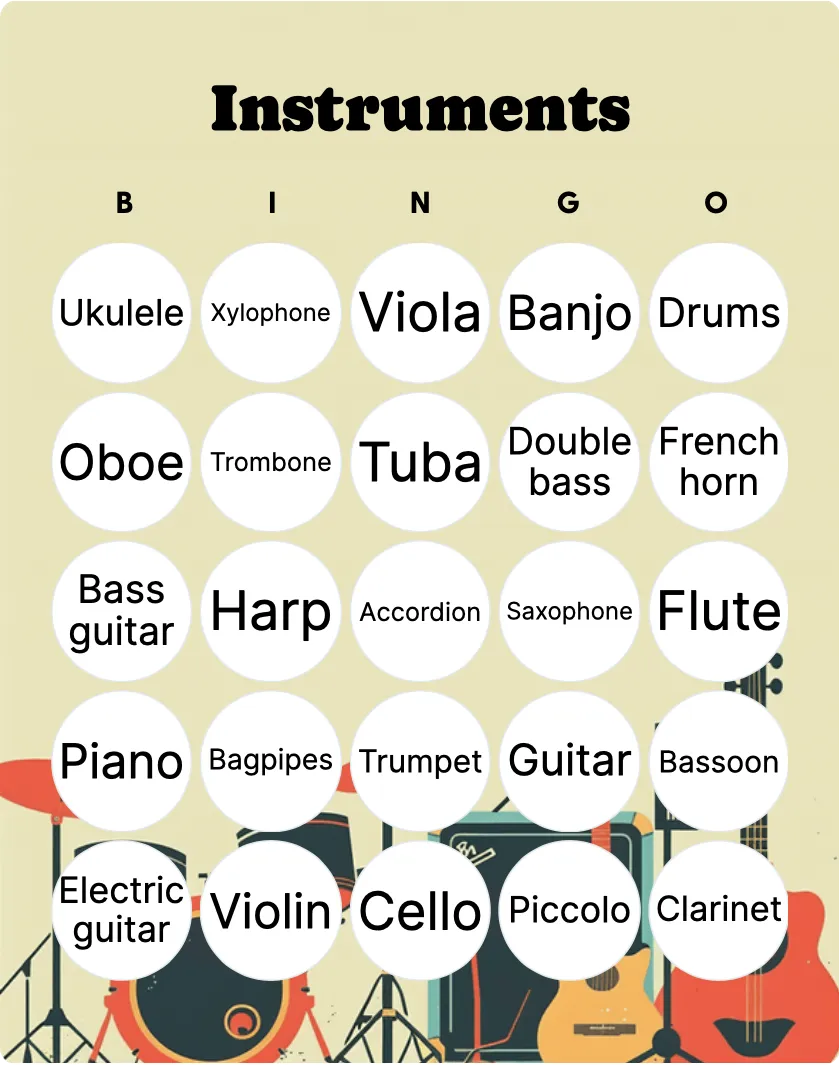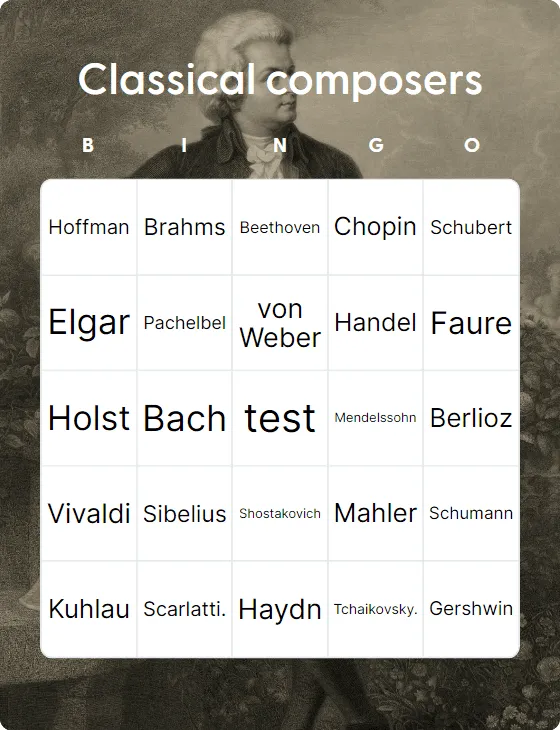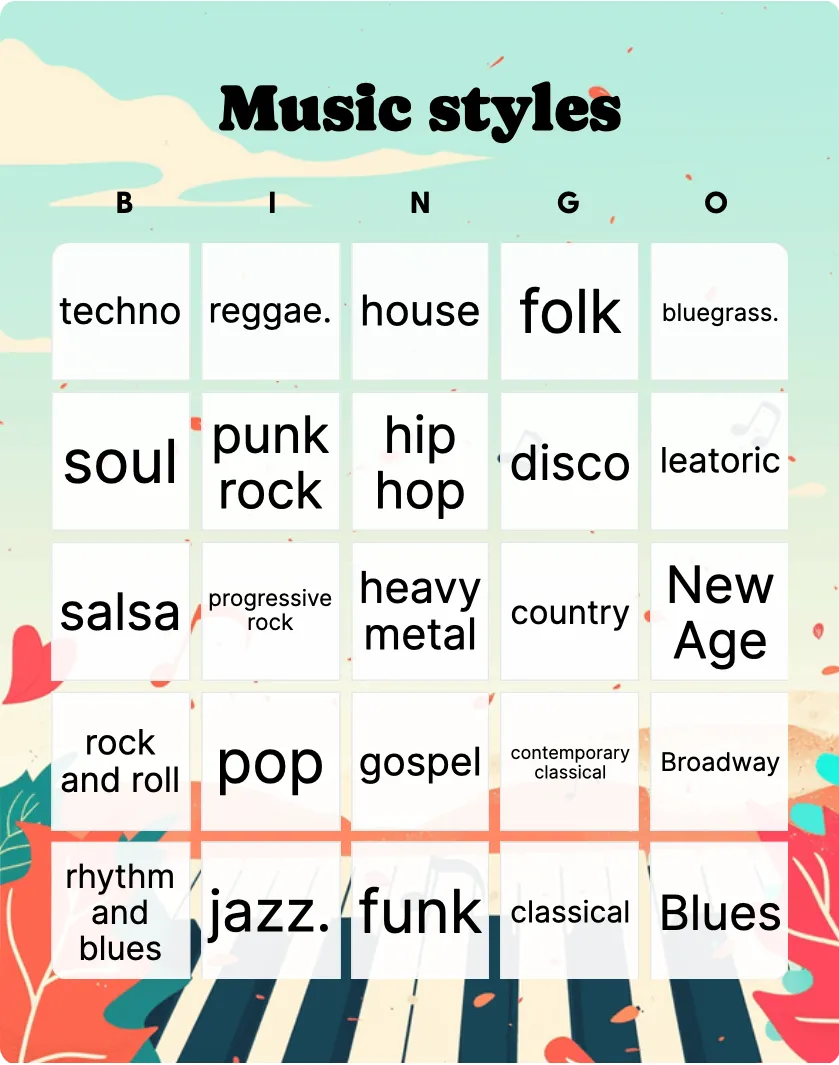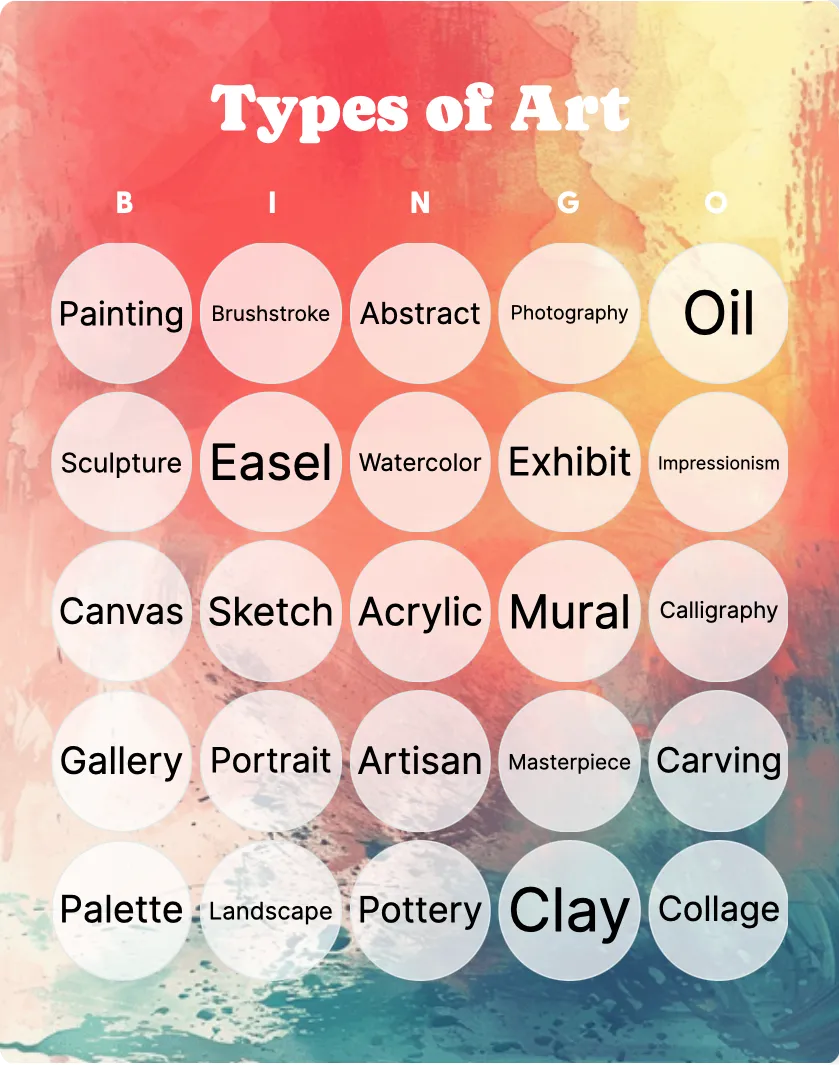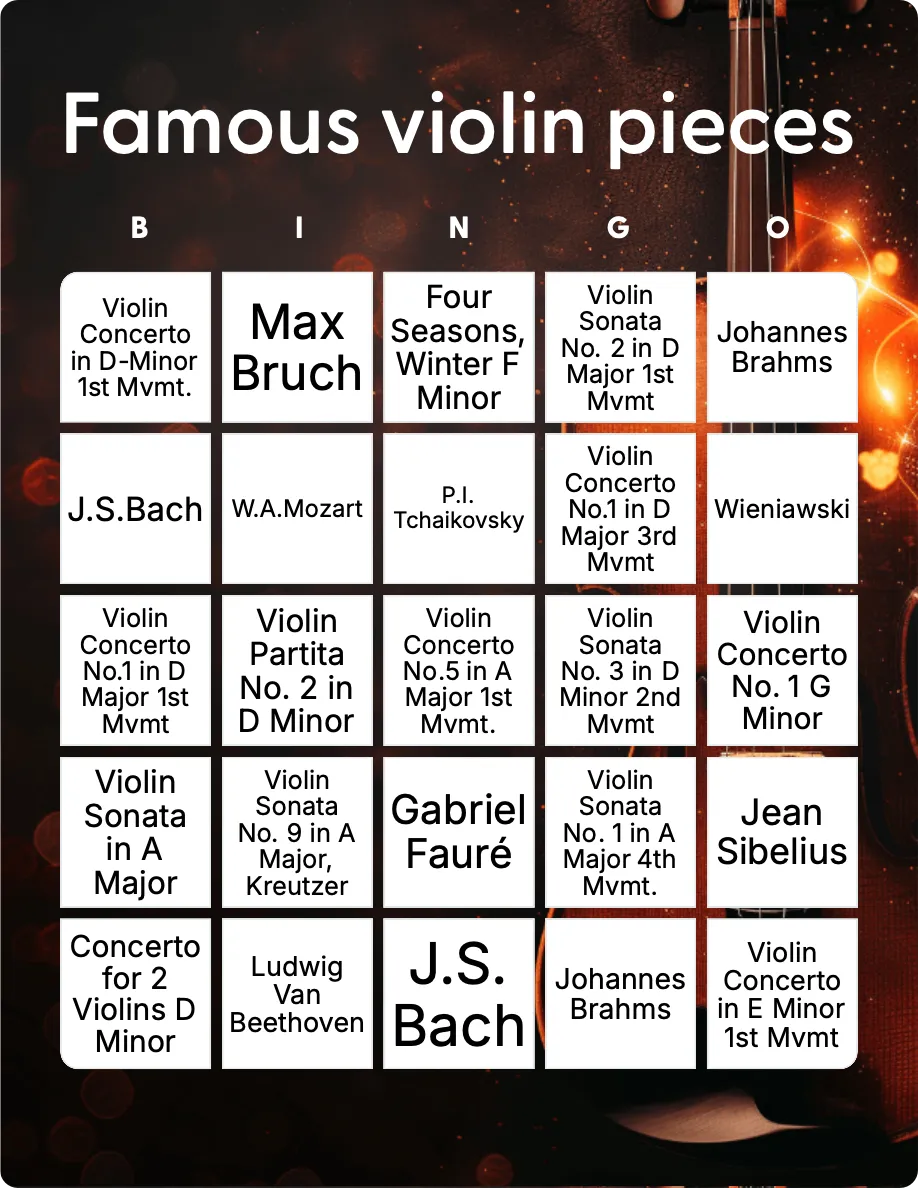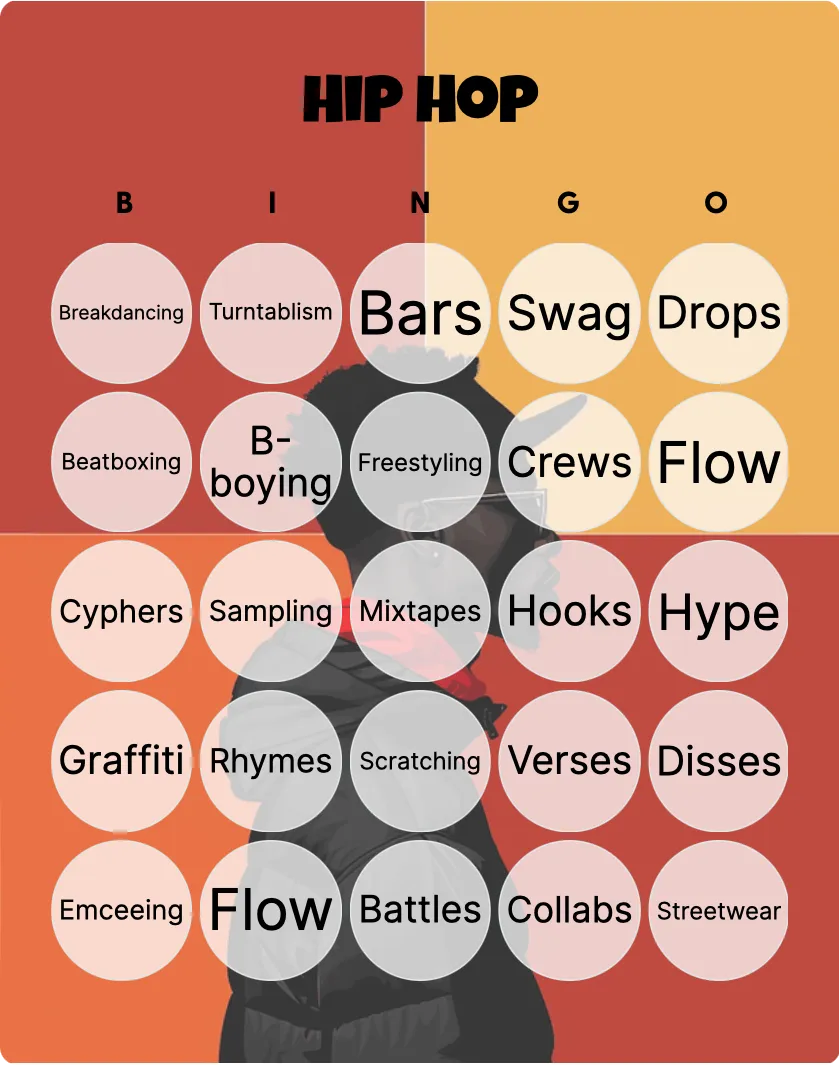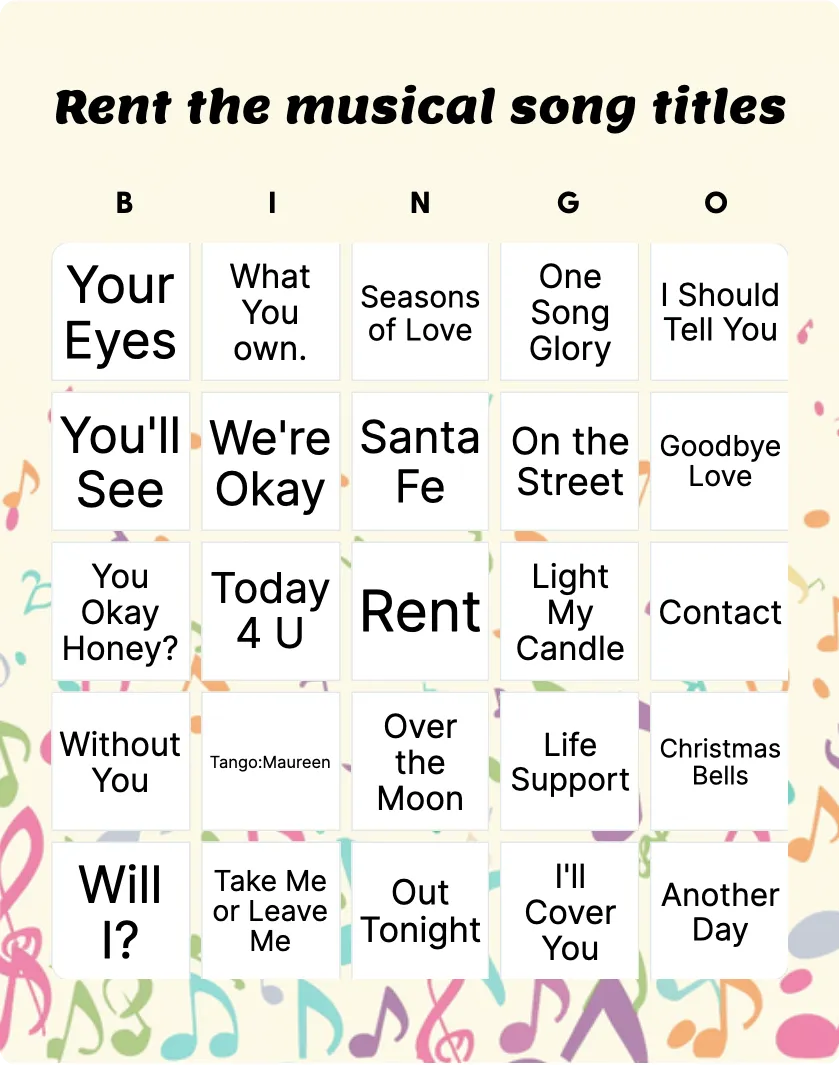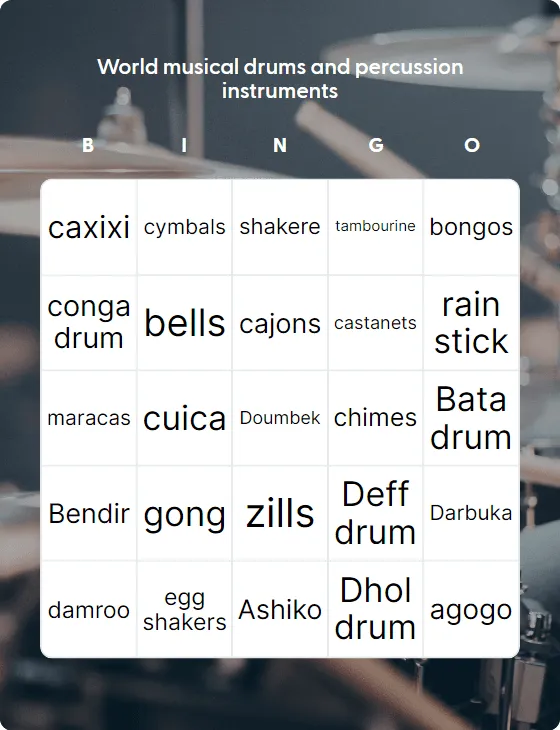Music education bingo
Hit the right note with our Music Education Bingo! From classical to contemporary, these templates make learning rhythms and notes fun. Perfect for classrooms, private lessons, and self-study. Let's play!
Playing music education bingo
Music education bingo is a creative twist on the classic game, designed to teach music theory, instruments, composers, and more in an engaging and interactive way. Instead of numbers, your bingo cards are filled with musical terms, symbols, or names of composers. It’s perfect for classrooms, private lessons, or even self-study for those musically inclined souls seeking a bit of fun in their educational journey.
Ideas for playing music education bingo
Now, forget the traditional bingo hall vibe; we’re here to make learning music as catchy as a pop song’s chorus. Here are some chart-topping ways to play music education bingo:
Note recognition bingo
Each square on your bingo card has a music note or a chord. As the game host plays these notes or chords, players mark off their cards. First to get a line shouts “Bingo!” This version is a hit for teaching note recognition and ear training.
Composer bingo
Fill your bingo cards with names of composers spanning different eras. When a piece by one of the composers is played, players mark off their card. It’s a great way to introduce learners to the wide world of composers, from Bach to Bernstein.
Instrument bingo
Perfect for familiarizing players with the sounds of different instruments. Each square represents a different instrument. Play a sound clip of an instrument, and players guess which instrument it is. This game can help players learn to identify instruments by sound alone.
Rhythm bingo
In this version, each square contains a different rhythm pattern. The leader claps or plays a rhythm, and players mark off their card if they have the matching rhythm. It’s a fantastic way to get hands-on with learning different rhythm patterns.
Music theory bingo
Fill the bingo cards with music theory terms (like “crescendo,” “diminished chord,” or “allegro”). As the terms are called out, players mark them off. It’s a great way to make music theory more engaging and less daunting.
Benefits of music education bingo
Playing music education bingo offers a symphony of benefits:
- Enhances listening skills: Players learn to listen closely to distinguish between different notes, rhythms, and instruments.
- Boosts memory and recall: Associating musical elements with visual bingo cards helps in retaining information.
- Encourages engagement: The competitive element keeps learners engaged and motivated.
- Makes learning accessible: It simplifies complex music theory into bite-sized, manageable pieces.
Summary
Music education bingo is a fantastic way to jazz up learning, making it engaging and enjoyable for everyone involved. Whether you’re a teacher looking to spice up your lessons or a student wanting to add some fun to your music theory study sessions, music education bingo hits all the right notes. And remember, with Bingo Card Creator, you can easily customize your bingo cards for any version of music education bingo, making it the perfect tool for educators and learners alike.
Generate bingo cards,
your way
Unleash your creativity with our versatile generator that simplifies the creation of personalized cards featuring text, emojis, and images!
Create card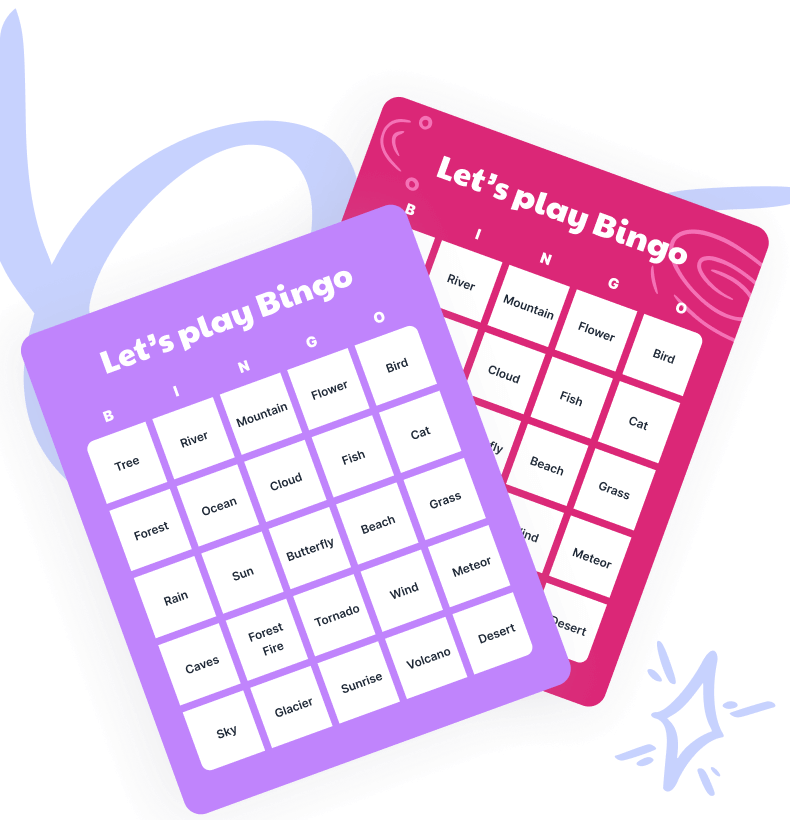
Blog
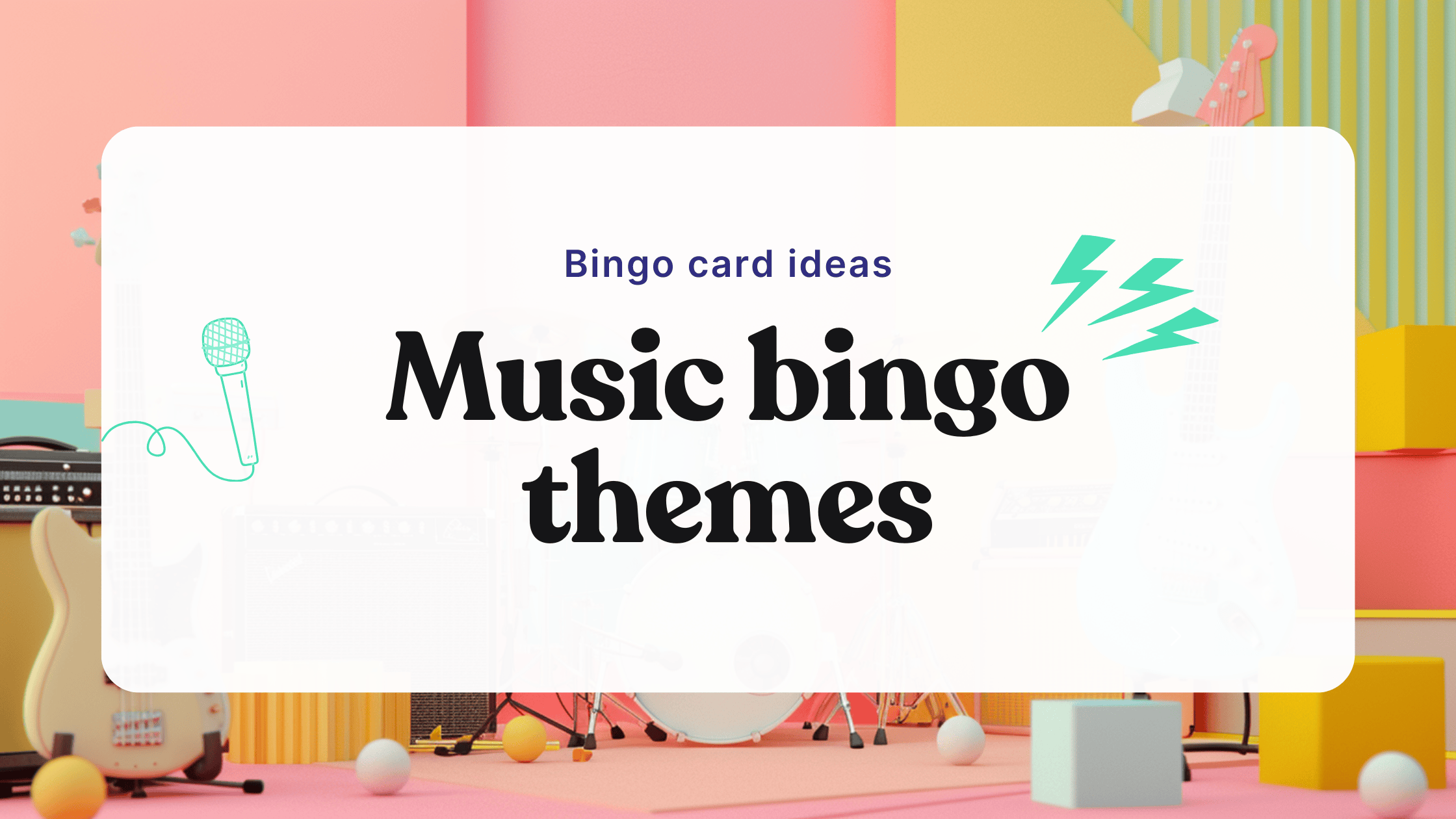
20 music bingo themes: A playlist for every party
Discover music bingo themes that blend nostalgia, excitement, and diverse musical tastes, from classic rock to reggae rhythms, ensuring your next game night is an unforgettable hit.
You may also be interested in....
Not quite found the card you were looking for? Here are some similar categories that you may be interested in.
